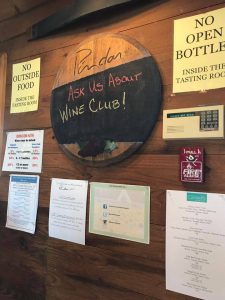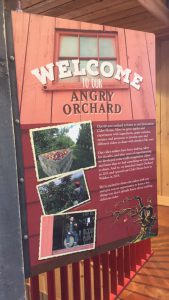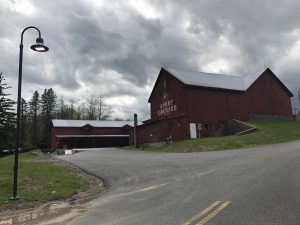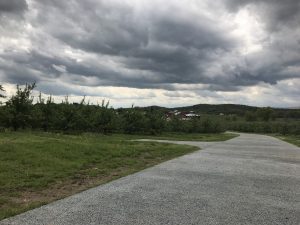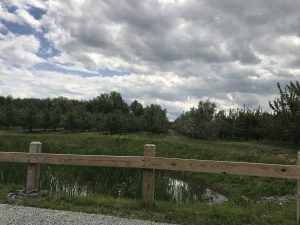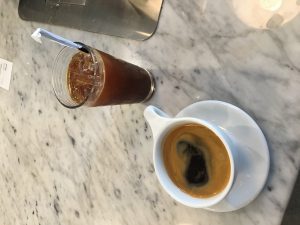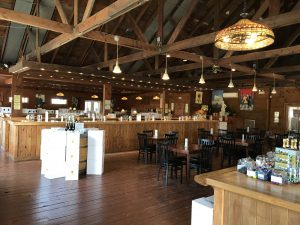
The tasting room and bar service.
For this Beverage Production Experiential Learning Analysis, I was able to visit Pindar Vineyards with my classmates. Pindar Vineyards is located in Long Island and one of the many vineries within the Long Island Wine Country Company. Within the text, The Wine Bible by Karen MacNeil stated, “By the late 1900s, Long Island has twenty-four wineries, and today it boasts about sixty-three.” What a growth in wineries!
Owner of Pindar: Pindar Vineyards was founded in 1979, by one of the original pioneers ‘Dr. Herodotus “Dan” Damianos’, who is part Long Island Wine Country Company.
What is so special about this Pindar Vineyard? It is special because they provide a personal, first-class service to their guests, and are also specialized for their selection of wines “from bold red blends, to steel fermented, fruit-forward whites.” As expressed on the Pindar Vineyard brochure, “The nod to the tradition and every-present air of experience is evident when you enter Pindar Vineyards’ tasting room and winery.” Till today they are still up-to-date with this tradition. If you ever like to visit the Pindar Vineyard, the exact address is 37645 Main Road Peconic, N.Y. 11958.

Pindar Vineyards Fermentation tanks used for crush grape juices.
During my visit, I was able to observe what a vineyard actually looks like. There was an employee called Terry, she told us that there are 15 grape varieties that are grown in this vineyard and she also pointed to us what wines most wineries have. There was also the tasting room manager, Rose Faiella there that day. Pindar’s white grape wines offered are: Sauvignon Blanc, Viognier, and Chardonay. A few red grape wines offered are: Petit Verdot, Malbec, Gamay Noir, and Sauvignon Carbernet. A proprietary blend wine is Sevyal. A few wines on the “sweeter side” are Riesling and Moscato. A dessert wine offered is Gewurztraminer. Unfortunately, we were not able to tour the production facility itself, but we were able to grasp the concept that, the aging process such as aging in oak or bottled-aging are decided by the owners. Pindar is known for their “blending traditional wine making” practices.
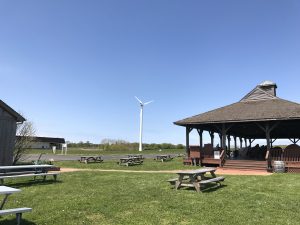
The Turbine used as a power course of many vineyards.
A few approaches to agriculture this vineyard utilizes in their business are going green and using wind turbines. By going green I meant, turning lawn clippings from dozens of landscapers, fish parts from a local seafood wholesaler, and their own grape skins for creating a rich compost of their vineyards, instead of using pesticides and chemical fertilizers. Thus, making use out of garbage or in other words, “recycling.” As stated from Pindar Vineyards website itself, “We are always looking for new ways to lessen our environmental footprint, and we are tapping into Long Island itself to do so.” Pindar Vineyard also partnered with the L.I. Power Authority, to install a Turbine at the North Fork Winery location. This turbine will create power for “80% of all winery operation.” How environmental friendly is that?
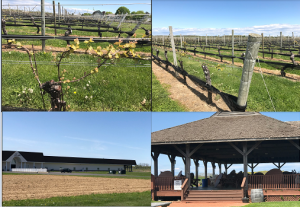
In this picture there is a picture of the vine “bud- breaking”. The outside of the production facility, and the outside sitting area of Pindar.
It was very eye-opening to see a vineyard upfront because I was able to witness the viticulture process of the vineyard. I was able to see the concept of how the scion, which is the varietal grape that is grafted onto the rootstock. The day I visited the vineyard was on May 10th, at this time I believe I was seeing the vines “bud-break” process, if I am correct. Bud-break is when the leaves and shoots start to grow on the vines.
This region’s climate is moderate because of it is surrounded between two body of waters; the Atlantic Ocean to the east and the Long Island Sound to the north of Long Island. Within this region, the soil variety is sandy loam, which contributes to the ability to producing vinifera (a type of grape vine) wines.
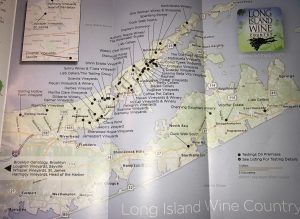
One of a market format of L.I. Wine Country to inform us about the numerous Wineries.
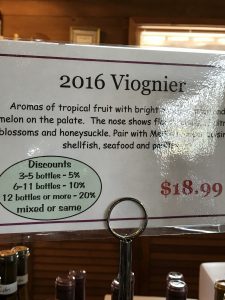
Pindar Winery’s most unique blends.
Terry introduced to us that their 2016, Viognier for $18.99 would be her personal recommendation because it is a “unique wine and extremely good.” She also recommended a red wine that is on the sweeter side called for $12.99 Sweet Scarlett, for my father.
Works Cited
Long Island Wine Country, Long Island Wine Council ‘Touring Guide’ Brochure, www.liwines.com
MacNeil, K. (2015). The wine bible (Revised Second ed.).
Pindar Vineyards website, https://www.pindar.net. © Copyright 2017 Pindar Vineyards· Winery, Ecommerce by Vin65
Pindar Vineyards Brochure, info@pindar.net
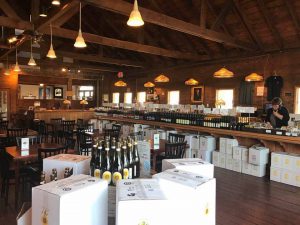 This image is the tasting room
This image is the tasting room 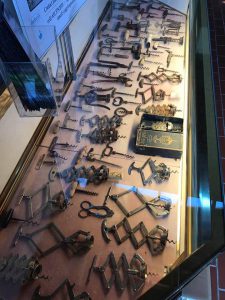 This image is all kinds of bottle opener
This image is all kinds of bottle opener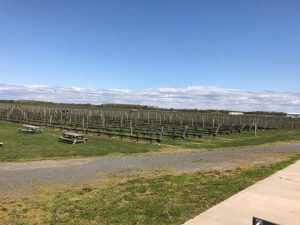 The vineyard in the Pindar
The vineyard in the Pindar Stainless tanks
Stainless tanks
